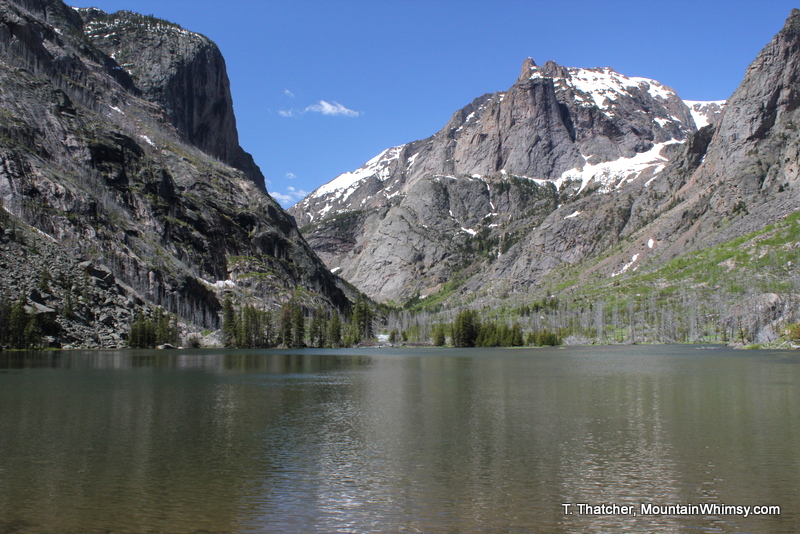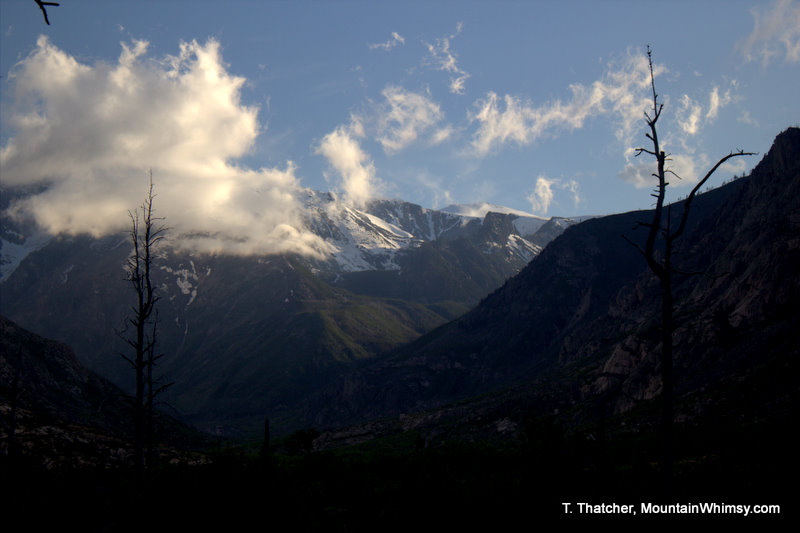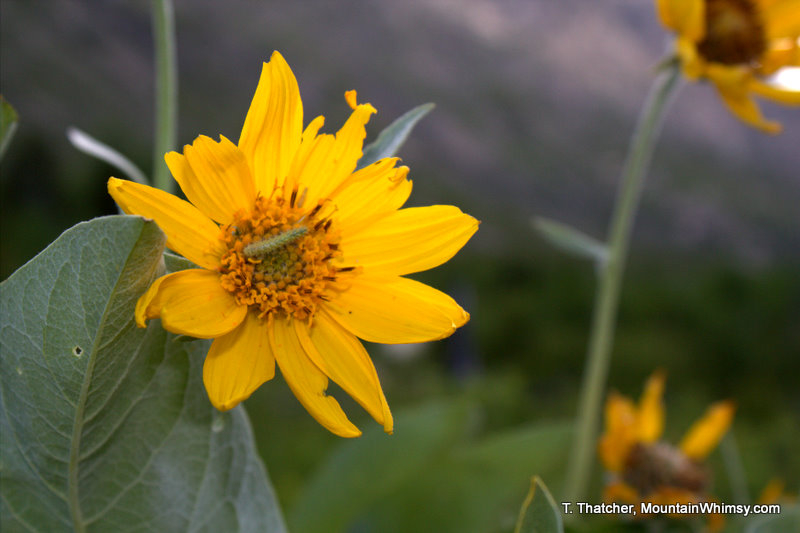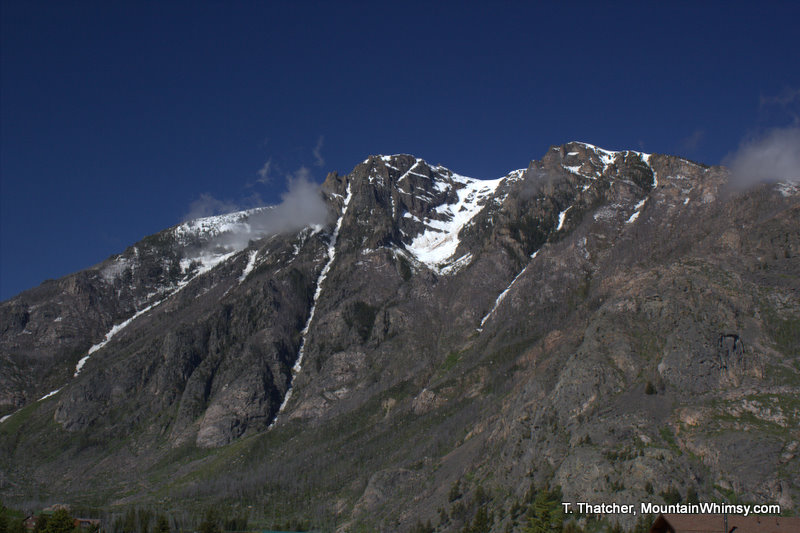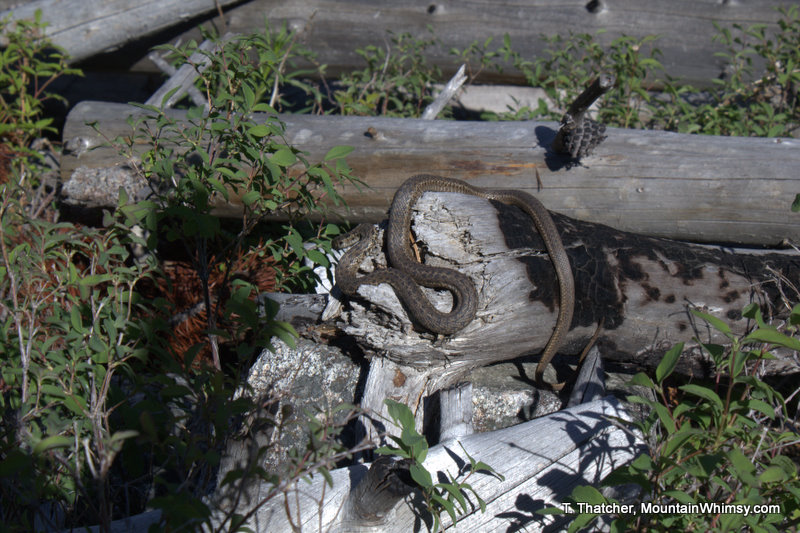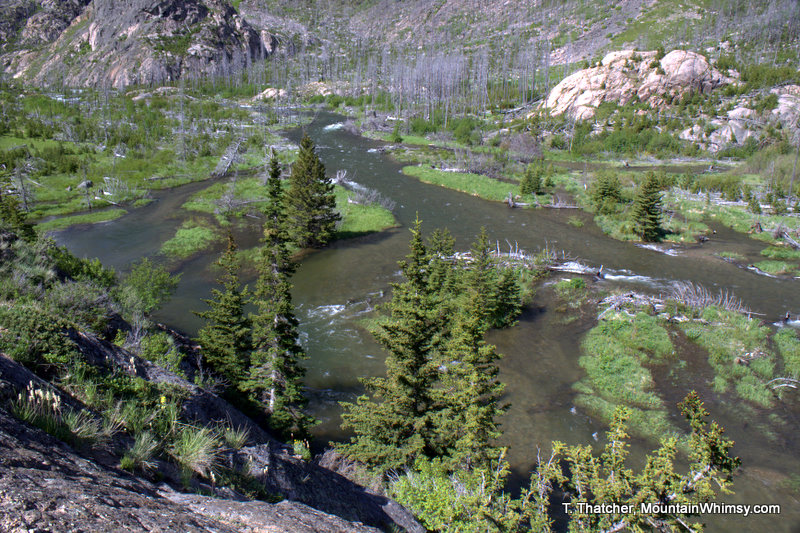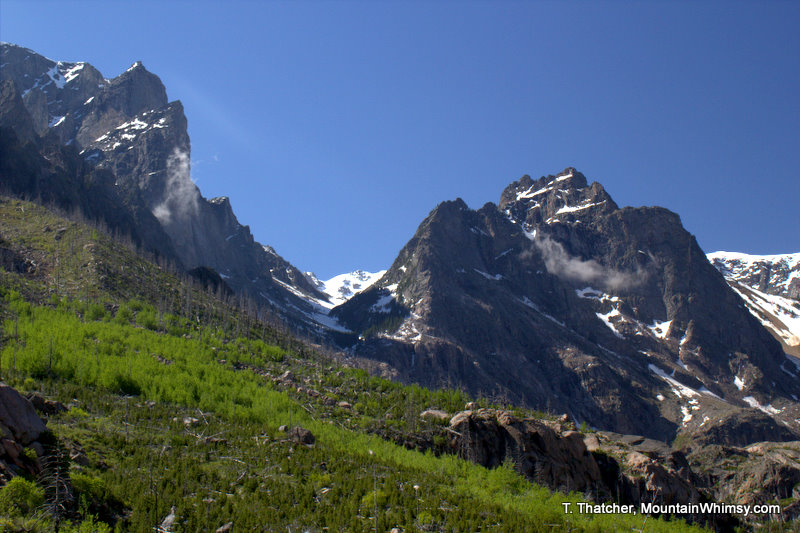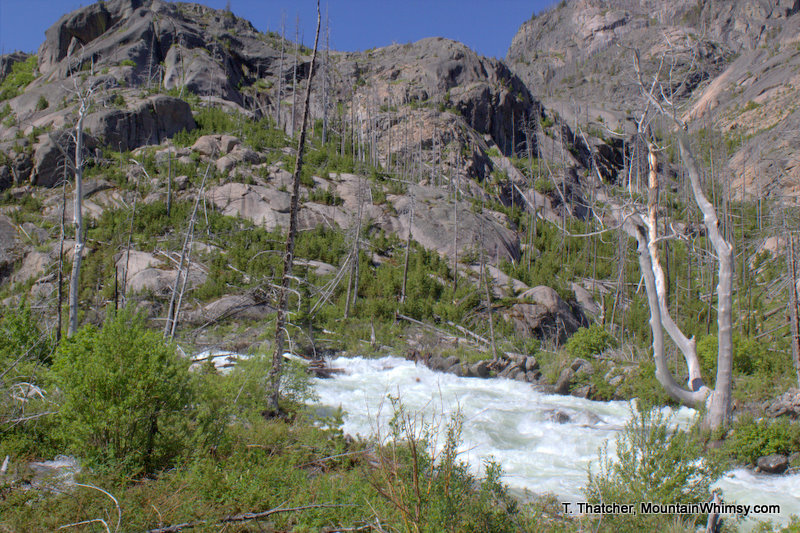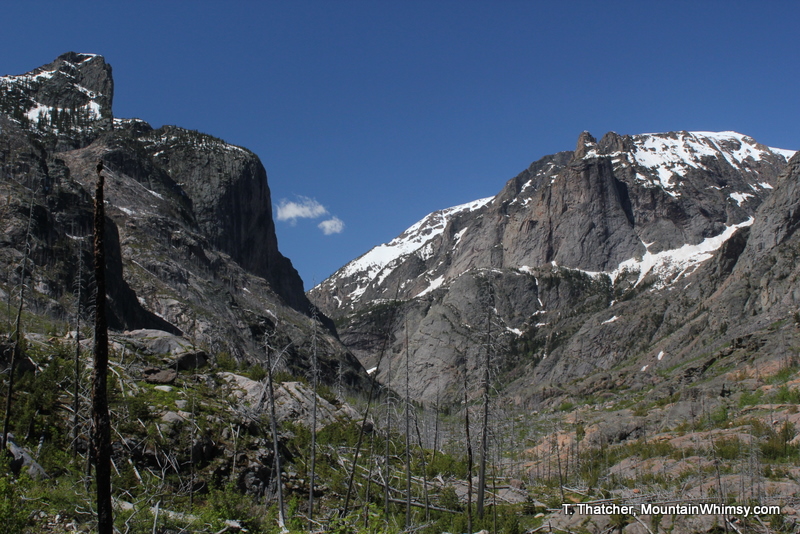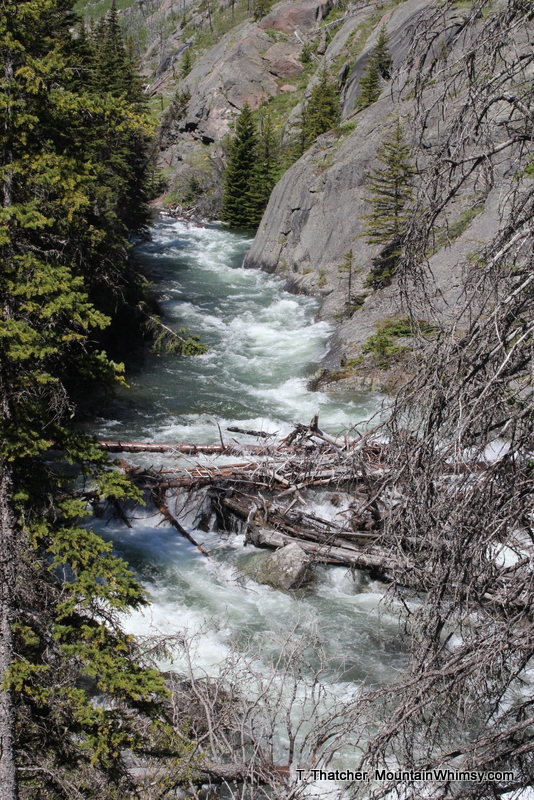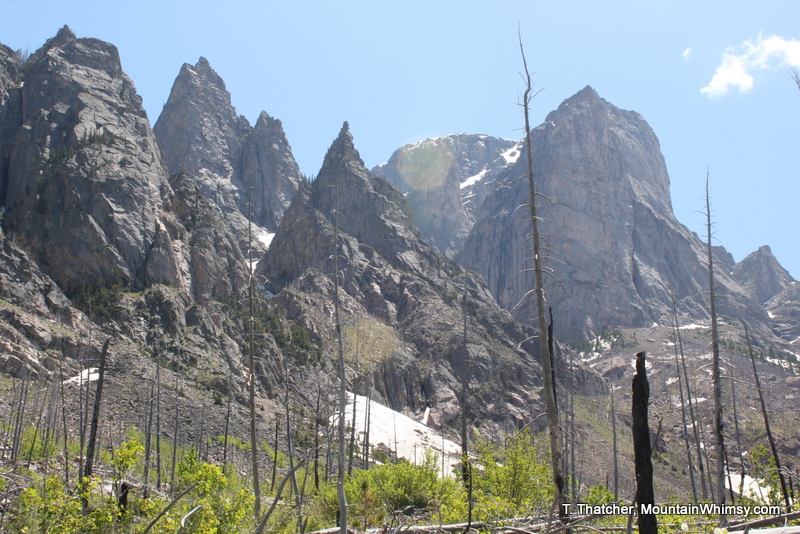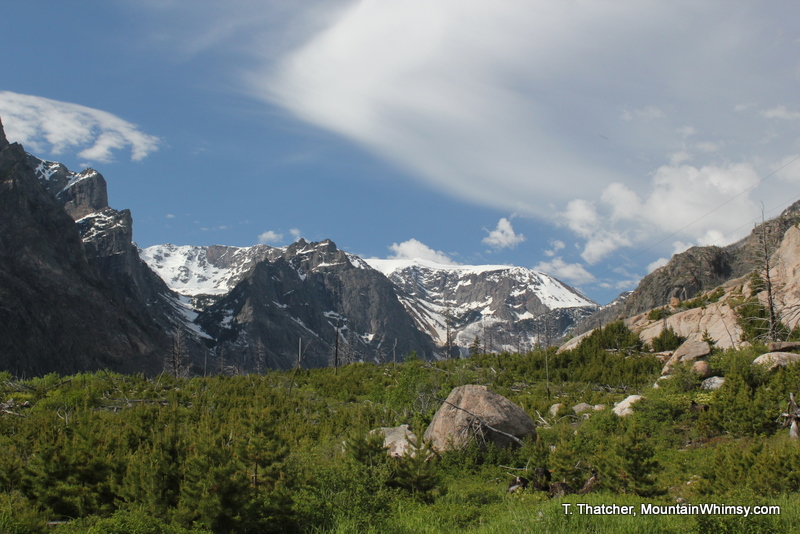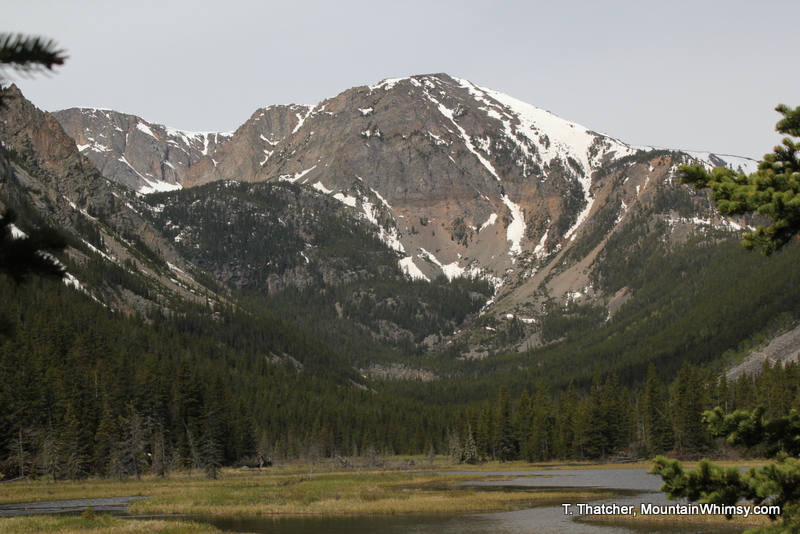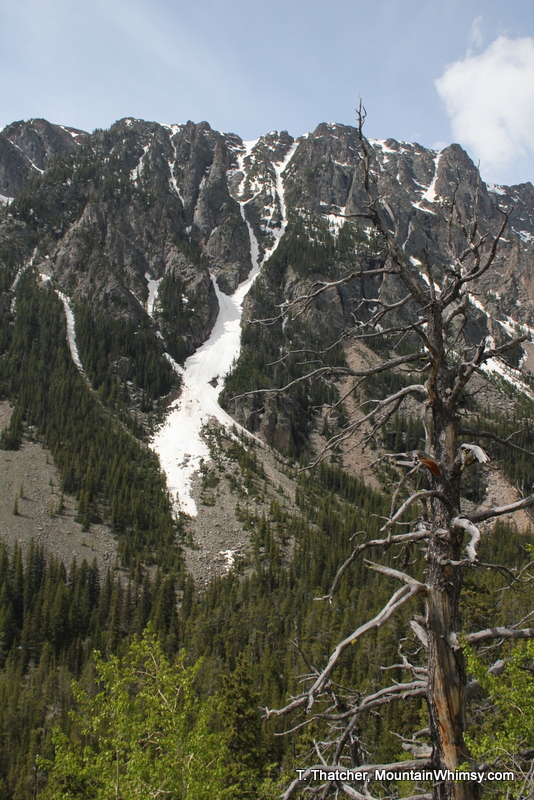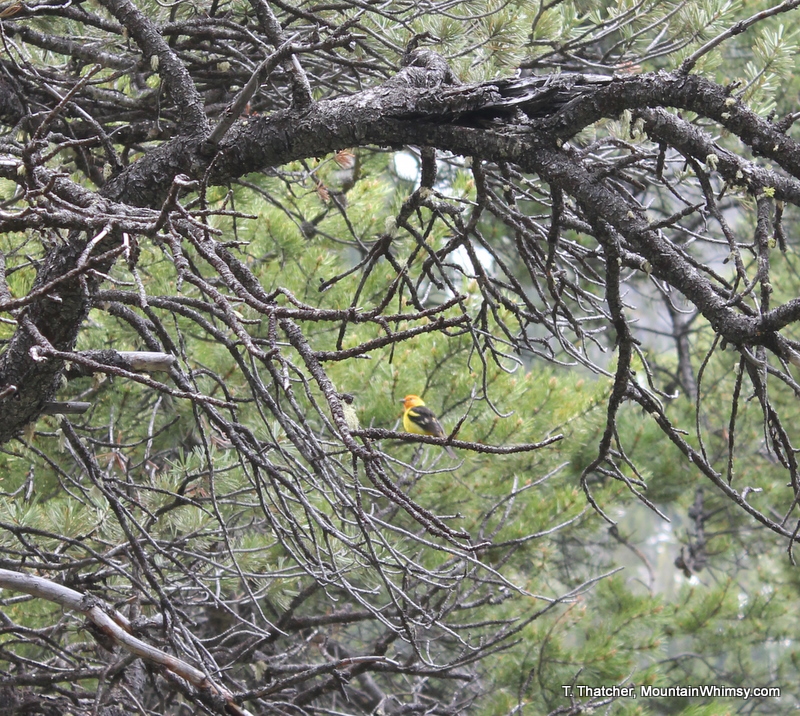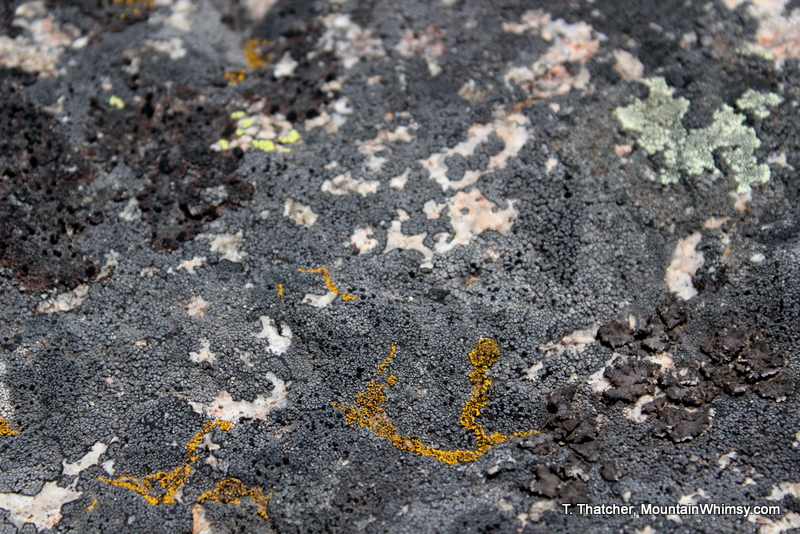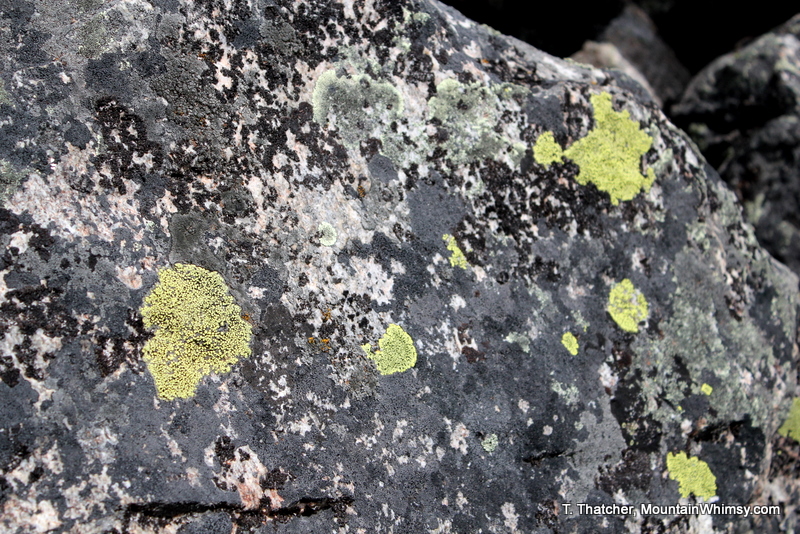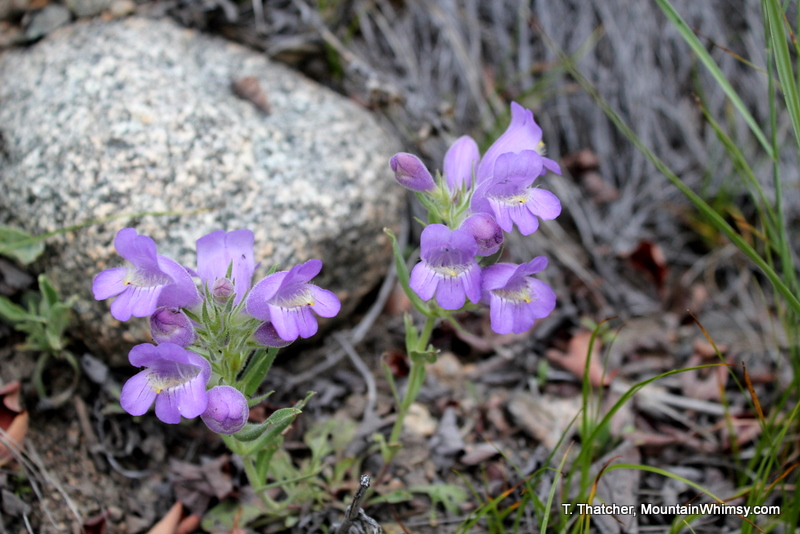“How glorious a greeting the sun gives the mountains! “
—John Muir
Mountains are often spoken of in grand terms…. “jagged peaks soaring to the sky” Or, “fangs of rock and ice piercing the blue infinity.” Or, “grand monoliths rising out of the plains.” But as a friend pointed out on a recent hike up the East Rosebud Valley in Montana’s Beartooth Mountains, we are actually seeing what is left over after most of the rock and stone has been washed away.
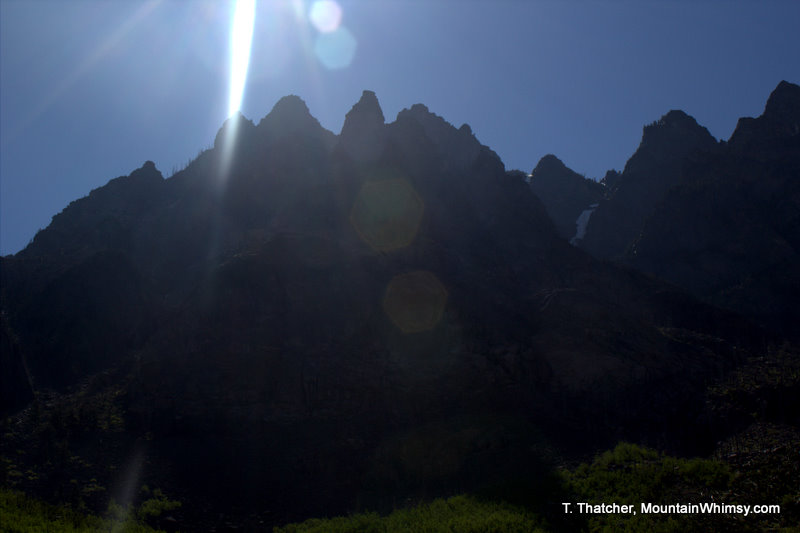
Mountains are in a constant state of change, a dramatic balance between competing forces. Wind and water combine with physical processes, chemical interactions, and gravity to constantly tear down that which tectonic uplift is endlessly trying to push up. In older mountains like the Appalachians, the tearing down is winning, resulting in rounded mountains and lower elevations. In contrast, the Beartooth Mountains and surrounding ranges like the Tetons are comparatively young. These ranges had their major uplift events fairly recently. Since that time they are now experiencing erosion, resulting in the tall, often jagged peaks, glorified in image and lore.
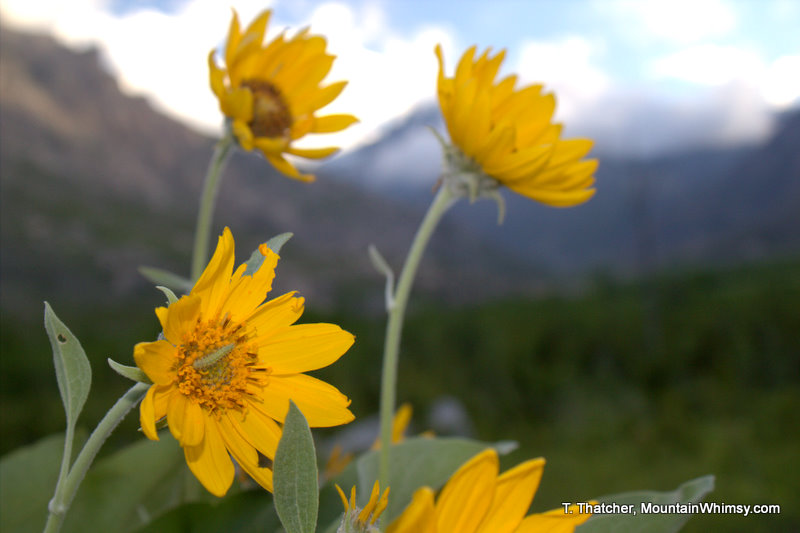
At the core of the Beartooths lie 4 billion year old Precambrian granites and metamorphic rocks. Hmmm. Old rocks in young mountains? Yes, it’s sort of counter-intuitive. Basically it means that there are some rocks that formed a long time ago that were buried deep under the surface of the earth that have been lifted up due to tectonic processes. These dense, solid rocks were mostly overlain by less dense material, and usually have some weaknesses of their own. As the softer rocks on top and the less resistant materials are eroded away, the older, denser rocks underneath are revealed. All of the eroded material is sent downstream by surface waters, filling in the valley areas, before eventually working their way out to the plains and eventually the sea. These processes were exposed in grand form in the East Rosebud drainage.
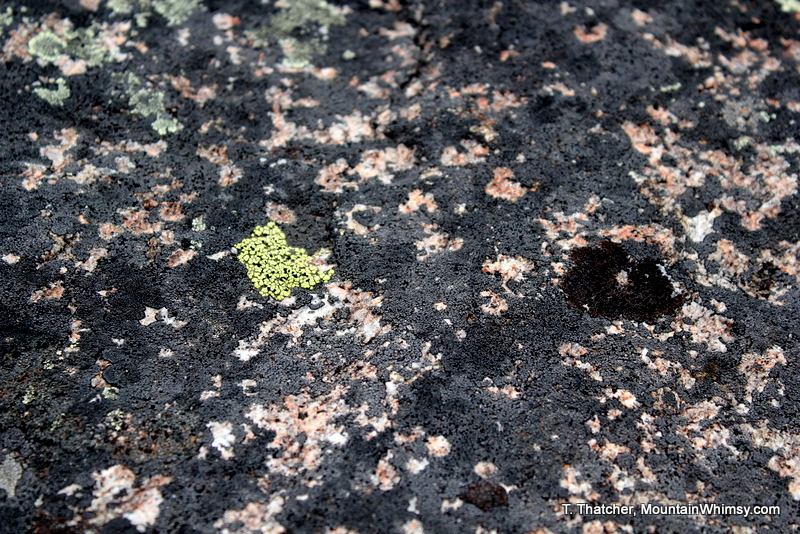
A large wildfire in 1995 burned much of the timber in this and the surrounding drainages. While there has been a great deal of forest regeneration in 16 years, the landscape is still raw and exposed. This year’s high snowpack and spring rains resulted in numerous new landslides and an impressive amount of water in the normally timid East Rosebud Creek. As you work your way downstream, more water is added by the West Rosebud Creek, Stillwater River, and numerous small tributaries before joining the Yellowstone River at Columbus, Montana. By this time the river is chocolate brown with the sediments being eroded away upstream and threatening to spill out of its banks.
[youtube=http://www.youtube.com/watch?v=A_jbbA1NJaY]This makes for some dramatic hiking. As we walked and took pictures, my mind kept going back and thinking about what used to be here. What did the valley look like 100, 1000, 100,000, or a million years ago? Were these peaks here? Were they even more dramatic? Or was this valley filled in and just another section of the Beartooth Plateau? This is the Negative Space. The perfect match or antithesis to the physical reality that we see today.
